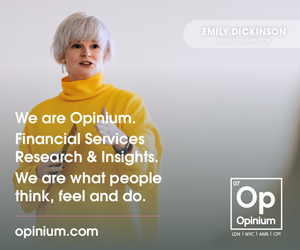From crypto-native infrastructure to tokenised equities and smart portfolios, eToro is positioning digital assets not as a trend, but as a foundation for the future of investing.
Founded in 2007, eToro has long positioned itself as a democratiser of global markets. Its early adoption of Bitcoin trading in 2013 marked it as a first mover in digital assets, but the firm’s ambitions have always extended beyond crypto speculation.
“The vision has always been to open the global markets for everyone to trade and invest in a simple and transparent way,” says Elad Lavi, vice president of corporate development and strategy at eToro. “We’ve never seen ourselves as a crypto company, we’re a multi-asset investment platform. But digital assets are a critical part of that story.”
Today, eToro offers access to over 22 global exchanges and more than 130 crypto assets, commodities, currencies, and indices. Yet it is the integration of tokenisation that signals a deeper strategic shift, one that positions the firm not just as a broker, but as a builder of next-generation financial infrastructure.
Tokenisation as infrastructure, not add-on
eToro’s recent relaunch of tokenised equities, offering 24/5 trading and fractional ownership, marks a significant evolution in platform architecture. These assets are designed to behave like programmable financial instruments, with the flexibility and liquidity of crypto markets.
Internally, the team refers to this as “ETF 2.0”: thematic baskets of assets, algorithmically rebalanced and built for digital-native investors. The firm’s smart portfolios extend this concept further, allowing users to invest in curated bundles of stocks, sectors, or even other investors.
“We want our customers to be part of this journey and get access to an innovative product that will expand over time,” Lavi explains. “Tokenisation isn’t just about wrapping assets, it’s about rethinking how they’re accessed, traded, and integrated into broader investment strategies.”
The firm’s tokenised offering is built on proprietary infrastructure, allowing it to manage custody, settlement, and compliance internally. This vertical integration gives eToro control over the user experience while enabling rapid iteration across jurisdictions.
Building the stack: crypto-native meets TradFi discipline
eToro’s approach to digital assets is rooted in infrastructure. When traditional banks and payment processors were reluctant to engage with crypto, the firm built its own systems, applying compliance, AML, and treasury principles to blockchain-native operations.
“We had to build everything ourselves,” Lavi recalls. “Banks didn’t want to talk to us about Bitcoin. Payment processors were terrified. So, we built our own crypto treasury, our own AML systems, our own custody solutions. That’s what gave us the confidence to scale.”
This included the acquisition of Firmo in 2019, a smart contract security firm founded by Dr Omri Ross, now Chief Blockchain Scientist at eToro. “We built the company to add security to smart contracts,” Ross explains. “And eToro had the users, the vision, and the appetite to scale it.”
The integration of Firmo’s technology enabled eToro to deepen its capabilities in custody, smart contract deployment, and tokenised asset management, laying the groundwork for its current offerings.
“We’re not just listing tokens,” Ross adds. “We’re building the infrastructure to support tokenised finance, from custody to compliance to composability.”
Smart contracts and composable finance
Ross sees smart contracts as central to the future of capital markets. “You can custody assets on-chain, remove credit risk, and build composable products that integrate multiple providers in a single transaction,” he says.
This composability is what makes tokenisation transformative. A tokenised equity can be wrapped into a lending protocol, collateralised in a derivatives contract, and traded on a decentralised exchange, all without manual intervention.
“It’s not just about digitising assets,” says Ross. “It’s about rethinking how financial products are created, distributed and settled. Smart contracts give us a new architecture, one that’s more transparent, more efficient and more inclusive.”
For eToro, the challenge is to harness this potential within a compliant, user-centric framework. Its centralised tech stack allows for scalability and control, while its localised deployment model ensures regulatory alignment across jurisdictions.
Lavi’s remit includes M&A, and his philosophy is pragmatic: build when you have the expertise, acquire when speed and integration matter. “People underestimate the risk of execution when building internally,” he notes. “We give a premium to products that have proven themselves with both technology and go-to-market.”
This approach has allowed eToro to expand its capabilities in tokenisation, crypto custody, and smart portfolio construction without compromising on product quality or regulatory compliance. The firm’s IPO in 2025 further validated its model, signalling investor confidence in its ability to navigate both innovation and oversight.
“The listing wasn’t just a financial milestone,” said Lavi, “It was a signal to the market that tokenised finance is real, scalable and investable.”
Digital assets as a strategic lens
While eToro remains a multi-asset platform, digital assets are increasingly central to its strategic identity. From tokenised stocks to crypto-native smart portfolios, the firm is building a future where asset classes are interoperable, programmable, and accessible around the clock.
“We’re not trying to replace traditional finance,” Lavi clarifies. “We’re trying to upgrade it. Tokenisation allows us to offer better products, more flexible, more transparent, more inclusive.”
This isn’t about chasing hype, it’s about building infrastructure. “Sometimes innovation uses stairs instead of a lift,” Lavi reflects. “But once it lands, it’s irreversible.”
Yet, tokenisation’s trajectory depends on regulatory clarity. The UK’s Financial Conduct Authority (FCA) and HM Treasury have signalled support for digital securities, while the EU’s MiCA framework and DLT Pilot Regime offer structured pathways for adoption.
eToro’s approach, centralised infrastructure with localised deployment, offers a model for compliance at scale. “Our strategy is always to find the technology that will allow us to go to market with the best possible product that can be replicated in many markets,” Lavi notes.
This balance between innovation and regulation will define the next phase of tokenisation. Firms that can navigate both will shape the future of capital markets. For eToro, tokenisation is not a feature, it’s a direction of travel. As regulators formalise frameworks and institutional players enter the space, the firm is positioning itself to scale digital asset offerings across jurisdictions and user segments.
Whether through smart contracts, fractionalised equities, or programmable portfolios, eToro’s development reflects a quiet revolution in capital markets, one built not on hype, but on infrastructure, execution, and a belief in open finance.
“We’ve been building this for over a decade,” Lavi says. “Now the market is catching up.”



